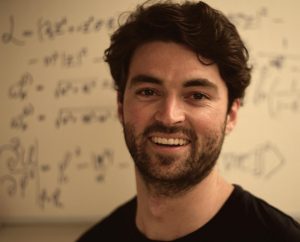
Dr Harley Scammell, UNSW
Congratulations to FLEET UNSW postdoc Harley Scammell who has been awarded a Fulbright Scholarship to work with world-renowned theoretical physicist Subir Sachdev at Harvard University on the mechanisms behind superconductivity – an exotic quantum phase of matter.
The Australian-American Fulbright Commission promotes education and cultural exchange between Australia and the US,
By the completion of the Fulbright program, researchers around the world will be able to benefit from the results of Harley’s research into superconducting systems.
At FLEET, Harley works with Oleg Sushkov (Research theme 1) on the theory of artificial graphene, an artificially-engineered semiconductor system can be tuned to form robust topological (or Chern) insulating states.
Harley’s research has focused on the interplay of various tuning parameters – such as confinement symmetry and spin-orbit coupling – on the electronic properties of artificial graphene. A primary motivation has been to develop a non-perturbative theory of the electronic properties of artificial graphene, which is essential to understand the robustness of the associated topological (and Chern) insulating states.
“I love this area of physics,” says Harley. “I love the prospect of developing cutting edge technologies to assist in the fight against global environmental issues. I want to see clever, new technologies or approaches that reduce our excess energy wastage.”
Harley has found already found great collaborative value from working within the Centre. “Working within FLEET provides opportunities to meet and collaborate with renowned physicists worldwide, much more so than in a typical research postdoctoral role.” We’re delighted that Harley will be getting even more such great opportunities via working with Prof Sachdev at Harvard.
Watch below as Harley describes FLEET’s research into creation of artificial graphene and artificial anti-graphene within a 2D hole gas, the challenge of electronic disorder that is ‘washing away’ useful topological effects, and how his team is generating a larger spin-orbit gap that will provide more-robust topological properties.
Read more on the Australian Fulbright website.

